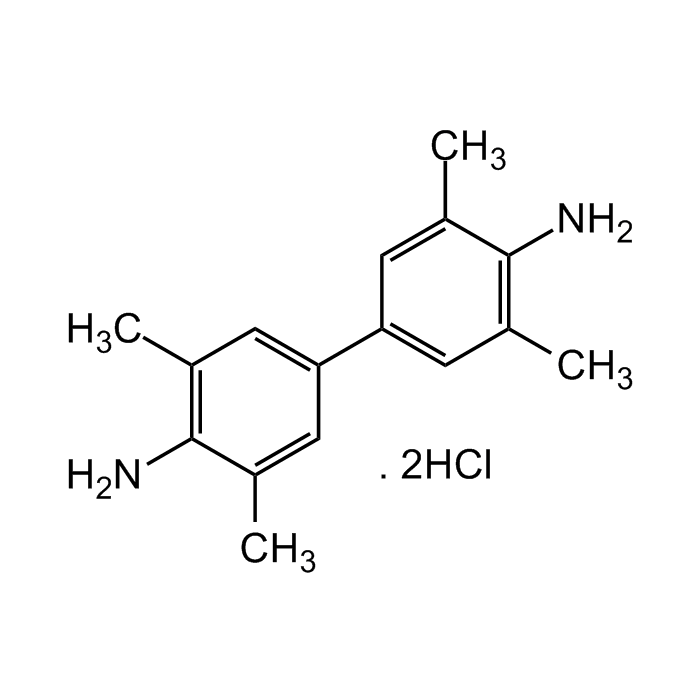Cookie Policy: This site uses cookies to improve your experience. You can find out more about our use of cookies in our Privacy Policy. By continuing to browse this site you agree to our use of cookies.
Chemodex
TMB dihydrochloride

| Product Details | |
|---|---|
| Synonyms | 3,3′,5,5′-Tetramethylbenzidine dihydrochloride; TMBZ |
| Product Type | Chemical |
| Properties | |
| Formula |
C16H20N2 . 2HCl |
| MW | 240.3 . 72.9 |
| CAS | 64285-73-0 |
| Source/Host Chemicals | Synthetic |
| Purity Chemicals | ≥95% (HPLC) |
| Appearance | White to off-white to pink powder. |
| Solubility | Soluble in DMSO. |
| Identity | Determined by NMR. |
| Declaration | Manufactured by Chemodex. |
| Other Product Data |
Click here for Original Manufacturer Product Datasheet |
| InChi Key | NYNRGZULARUZCC-UHFFFAOYSA-N |
| Smiles | Cl[H].Cl[H].CC1=CC(=CC(C)=C1N)C1=CC(C)=C(N)C(C)=C1 |
| Shipping and Handling | |
| Shipping | AMBIENT |
| Short Term Storage | +4°C |
| Long Term Storage | +4°C |
| Handling Advice |
Keep cool and dry. Protect from light and moisture. |
| Use/Stability | Stable for at least 2 years after receipt when stored at +4°C. |
| Documents | |
| MSDS |
 Download PDF Download PDF |
| Product Specification Sheet | |
| Datasheet |
 Download PDF Download PDF |
TMBZ is a chromogenic reagent utilized for peroxidase detection. It has been developed as an alternative to benzidine. Although the TMBZ solution is colorless, it turns bluish-green (λmax: 655 nm) in the presence of hydrogen peroxide and peroxidase. The structure of this bluish-green complex is thought to be a radical form of two oxidized TMBZ molecules. This peroxidase substrate is used in staining procedures in immunohistochemistry as well as being a visualising reagent used in enzyme-linked immunosorbent assays (ELISA). The substrate produces a soluble end product that is pale blue in color and can be read spectrophotometrically at 370 or 620-650 nm. The TMB reaction may be stopped with 2M H2SO4 (resulting in a yellow color), and read at 450nm.
(1) V.R. Holland, et al.; Tetrahedron 30, 3299 (1974) | (2) P.E. Thomas, et al.; Anal. Biochem. 75, 168 (1976) | (3) H.H. Liem, et al.; Anal. Biochem. 98, 388 (1979) | (4) E.S. Bos, et al.; J. Immunoassay 2, 187 (1981) | (5) K. Suzuki, et al.; Anal. Biochem. 132, 345 (1983) | (6) F.H. Pujol, et al.; J. Immunoassay. 14, 21 (1993) | (7) F.B. Serrat; Talanta 41, 2091 (1994)





